Honkai: Star Rail is HoYoverse’s upcoming turn-based RPG set to launch on April 26th. Set after the events of ‘A Post-Honkai Odyssey’, in an alternative universe from Honkai Impact 3rd, players will get to explore the galaxy aboard the Astral Express.
This will be the first time HoYoverse has dabbled in the turn-based genre, but fans of HI3 and Genshin Impact can expect many familiar concepts. The game blends third-person exploration, akin to Genshin, with turn-based combat featuring a diverse cast of both familiar and brand-new characters. Although not an open-world game, there are still many areas for players to explore, with locations easily accessible through various teleport points.
For players eager to learn more, let’s take a look at the basics of the game and some of the core mechanics.
Elements
Characters in Star Rail each have an Elemental type and deal damage according to their respective Elements. There are seven types of Elements in the game: Physical, Fire, Ice, Lightning, Wind, Quantum, and Imaginary. The Elemental concept should be familiar for Genshin and HI3 players, with Quantum and Imaginary being core Honkai mechanics. However, unlike Genshin and HI3, Star Rail does not follow the classic Elemental ‘Rock-Paper-Scissors’ formula. Instead, enemies will have various Elemental Weaknesses and Resistances that require corresponding Elements to deal with.
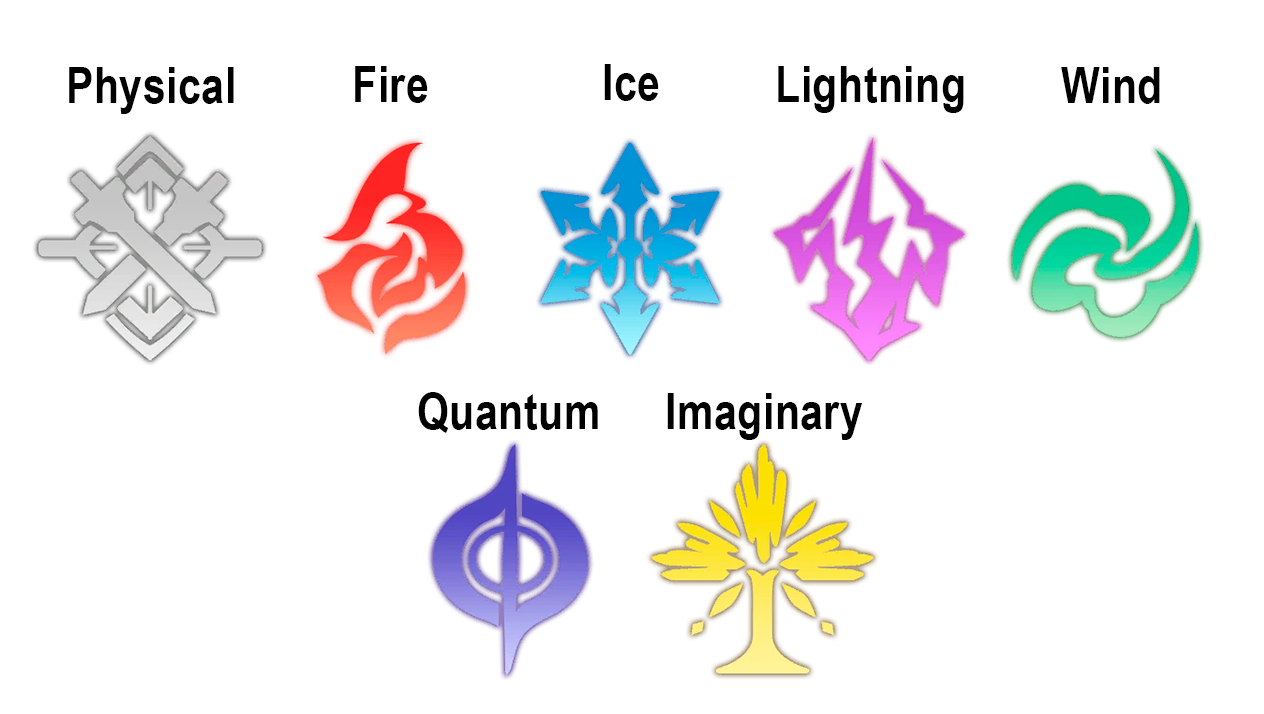
Enemies have shields, shown as a white bar, called Toughness. To break through Toughness and deal meaningful damage to their HP, players must use Elements that correspond to the enemies’ Weaknesses, which are displayed above their HP bar. For instance, enemies with Fire, Lightning, and Physical Weaknesses will require one of those Elements to deplete the Toughness bar. When a Toughness bar is active, the enemy takes reduced damage and deals additional damage. Destroying their Toughness causes ‘Weakness Break,’ which inflicts an effect to the enemy based on the Element used when Toughness is destroyed. In addition, enemies without Toughness will take additional damage and deal less damage to the players. Here are the Weakness Break effects for each Element:
- Physical: Deals Physical damage and applies a Bleed (Physical DoT) effect.
- Fire: Deals Fire damage and applies a Burn (Fire DoT) effect.
- Ice: Deals Ice damage and applies Frozen status, disabling enemies for a turn, and inflicting an Ice DoT.
- Lightning: Deals Lightning damage and applies a Shock (Lightning DoT) effect.
- Wind: Deals Wind damage and applies Wind Shear (Wind DoT) effect.
- Quantum: Deals Quantum damage and applies Entanglement, delaying enemy actions and inflicting Quantum DoT.
- Imaginary: Deals Imaginary damage and applies Imprisonment, delaying enemy actions and inflicting Speed reduction.
Enemies will also occasionally have Resistances and Immunities to certain Elements and effects. For example, Fire Resistance will significantly reduce the amount of Fire damage the enemy takes, while Frozen Immunity will protect them from any Freeze effects.
Paths
Along with Elements, each character in Star Rail has a Path they follow. Paths are associated with Aeons, essentially gods, and are akin to classes in other RPGs that define a character's role in the team. Currently, there are seven playable Paths in the game and seven others that have yet to receive playable characters. Having a good understanding of Paths is essential for creating effective team compositions that can tackle various content in Star Rail. The current playable ones are:
- The Destruction: Characters in this Path are well-rounded damage dealers with good survivability.
- The Hunt: Characters in this Path excel at single-target damage.
- The Erudition: Characters in this Path excel at dealing AoE and multi-target damage.
- The Harmony: Characters in this Path provide Buffs for the team.
- The Nihility: Characters in this Path focus on applying Debuffs to enemies.
- The Preservation: Characters in this Path provide defensive Buffs and Shields for the team.
- The Abundance: Characters in this Path focus on healing team members.
The other seven Paths are:
- The Enigmata
- The Remembrance
- The Propagator
- The Beauty
- The Elation
- The Voracity
- The Trailblaze
Trailblaze Levels & Character Levels
Trailblaze Level functions as a player’s account level, much like Captain Level in HI3 and Adventure Rank in Genshin. With increases to Trailblaze Level, Players gain access to more features and content, as well as a boost to the Equilibrium Level. This increase in Equilibrium Level leads to more challenging enemies and greater rewards, similar to Genshin’s World Level system. Equilibrium Level will also dictate the Level cap of characters and how far they can ascend.
Players can increase their Trailblaze Level by earning Trailblaze EXP through various missions and activities. Spending Trailblaze Power, the game’s stamina system, is an effective way to gain Trailblaze EXP. Players receive one Trailblaze Power every six minutes and can store a maximum of 180 at a time. Spending Trailblaze Power efficiently before it caps is the best way to advance a player’s account.
Characters have a maximum Level cap of 80 and require EXP, Credits, and Ascension Materials to progress. Similar to Genshin, Ascension is necessary to break through several Level caps, and each one (20, 30, 40, 50, 60, and 70) requires specific Ascension Materials. Credits and Character EXP can be obtained through the Calyx game mode, while Ascension Materials can be farmed in various Stagnant Shadow stages. Both Calyx and Stagnant Shadow require players to spend Trailblaze Power in order to receive rewards.
Traces
Traces is an upgrade tree system that allows players to further enhance each character with additional effects and stats. To unlock points in the tree, players must level up and ascend the character. Furthermore, leveling up these points requires Trace upgrade materials and Credits. Trace upgrade materials can be farmed in the Calyx, which provides different materials depending on the day of the week.
Light Cones & Relics
Star Rail’s equipment system is strikingly similar to Genshin Impact, and fans of the latter should recognize it instantly. Light Cones are essentially Weapons from Genshin, which provide stats and unique effects. Identical to Genshin, they can be enhanced and ascended to a max level of 80. Light Cone EXP and Ascension materials can be farmed in the Calyx. Duplicate copies of Light Cones can be Superimposed, just like Weapon Refinement, to increase its effect rank, to a max of five.
While Genshin characters can only equip one Weapon type each, characters in Star Rail can equip any type of Light Cone. However, each Light Cone belongs to a Path and the unique effect only activates when equipped on a character with the same Path. When equipped with Light Cones of different Paths, characters can only benefit from the stats. This makes Light Cones less restrictive than Weapons because they can still function as stat sticks when players have limited options.
Relics are essentially armor equipment and function similarly to Artifacts from Genshin, providing stats and unique set effects. There are six Relic slots that a character can equip. The main Relic set group, consisting of the Head, Body, Hands, and Feet, provides a unique 2-set and 4-set effect. The Planar Ornaments, consisting of a Planar Sphere and a Link Rope, provides an additional separate 2-set effect.
Each Relic slot has a main stat and, depending on rarity, up to four substats. Head, Body, Hands, and Feet can be farmed from various Caverns of Corrosion, which are the Star Rail equivalents of Domains from Genshin. The Planar Ornaments are obtained from the Simulated Universe, a rogue-like game mode that players can challenge.
Warps
Warp is Star Rail’s gacha system and it operates much like Genshin’s Wishes, with some slight differences. There are three types of currencies for Warp: Stellar Jades, Star Rail Passes, and Star Rail Special Passes. A Warp can be obtained by spending 160 Stellar Jades, 1 Pass, or 1 Special Pass. Star Rail Passes can only be used for Departure Warps and Stellar Warps, while Star Rail Special Passes are reserved for the Character and Light Cone Event Warps.
The rates and hard pities for Warp are very similar to Genshin’s Wishes. Hard pity is when the game guarantees a certain rarity of item after a specific number of Warps. 5-star pities will vary across the different Warps, while 4-stars have a hard pity every 10th Warp. If the player has not received a 4-star item in nine Warps, the 10th Warp will have a 99.4% chance of being a 4-star item and a 0.6% chance of being a 5-star item. The chance of whether the 4-star item is a character or Light Cone is 50%. The hard pity will, of course, reset after the specified rarity is obtained. There are four types of Warps, or banners, in Star Rail.
The Departure Warp is the beginner banner and can only be used for 50 Warps before becoming unavailable. On this banner, players can only use Star Rail Passes and are unable to perform single Warps. Furthermore, the banner provides a 20% discount on sets of 10 Warps and guarantees a 5-star character within the 50 Warps. There are no rate-ups on this banner and no five-star Light Cones. The base rate, and consolidated rates (Pity included), are as follows:
- 5-star Character: 0.6% (2.08%)
- 4-star Character or Light Cone: 5.1% (12.16%)
The Stellar Warp is a standard banner with no special rate-ups for characters or Light Cones and is permanently available in the game. A hard pity of 90 Warps is in place for 5-star items, meaning that after 89 unsuccessful Warps, players are guaranteed a 5-star item on their 90th Warp. 5-star items have a 50% chance of being either a character or a Light Cone. After performing 300 Warps on this banner, players can choose one 5-star character from the Stellar Warp to keep. This bonus is only available once per account. There is a possibility that additional items may be added to this Warp in the future, as was the case for Wanderlust Evocation in Genshin.
- 5-star Character or Light Cone: 0.6% (1.6%)
- 4-star Character or Light Cone: 5.1% (13%)
The Character Event Warp is a limited-time banner that has special rate-ups for one feature 5-star character and three feature 4-star characters. There is a hard pity of 90 Warps for a 5-star character, and 5-star Light Cones will not appear on this banner. When a player pulls a 5-star character, there is a 50% chance that it will be the featured character. If players do not receive the featured character, then the next 5-star character they receive will guarantee to be the featured one. That means the hard pity for the featured 5-star is 180 Warps. As for the 4-stars, they follow the same 50% rule when players receive a 4-star item that is not one of the featured characters. Featured 4-star items have equal chances of appearing. The pity counter for Character Event Warps will carry on to the next Character Event Warp.
- 5-star Character: 0.6% (1.6%)
- 4-star Character or Light Cone: 5.1% (13%)
The Light Cone Event Warp is a limited-time banner that has special rate-ups for one feature 5-star Light Cone and three feature 4-star Light Cones. There is a hard pity of 80 Warps for a 5-star Light Cone, and 5-star characters will not appear on this banner. This banner follows the same rules as the Character Event Warp, except the chance of featured items appearing is 75% instead of 50%. The pity counter for Light Cone Event Warps will carry on to the next Light Cone Event Warp.
- 5-star Character: 0.8% (1.87%)
- 4-star Character or Light Cone: 6.6% (14.8%)
Eidolons
As with most gacha games, getting duplicate characters in Star Rail also provides additional power-ups through the Eidolons system. This feature is nearly identical to the Constellation system found in Genshin Impact. In this system, each character can reach a maximum of six Eidolon levels, requiring seven copies of the character to fully upgrade. By unlocking Eidolon levels, characters can gain additional effects, with the third and fifth levels always providing increases to Basic Attack, Skill, Talent, or Ultimate levels.
Skills
In Star Rail, characters possess five types of skills, namely Basic Attack, Skill, Ultimate, Technique, and Talent.
In combat, Basic Attacks deal damage and produce a Skill Point each time. They also function as the primary means of initiating combat while exploring the overworld. Skills, in contrast, are more potent abilities that require a Skill Point to activate. As the team shares a pool of five Skill Points, balancing Skill Point generation and expenditure is a crucial part of combat. Proper management of Skill Points ensures that the team can execute their Skills at the most opportune moments.
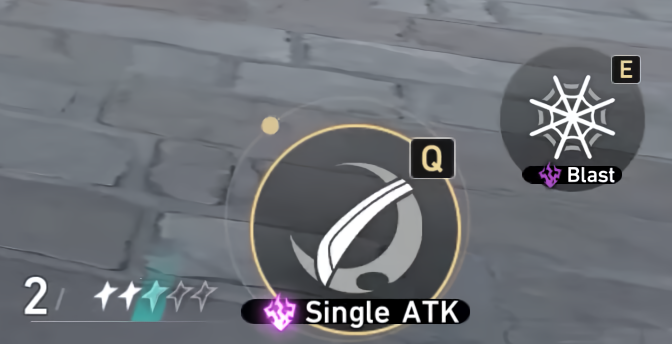
Ultimates are the strongest abilities that characters possess, requiring a full Energy gauge to activate. Each Ultimate has different Energy requirements, which can be generated through Basic Attacks, Skills, Passives, Ultimates, Light Cones, and more. Techniques are abilities that can only be used in the overworld and require charges to activate. Players can hold up to five Technique charges, which can be restored via items around the world. Some Techniques can be used to initiate combat while others provide strong passives before engaging in battle. Lastly, Talents are unique passive effects that each character possesses.
Combat
In Star Rail, players can have a team of up to four characters. While in the overworld, players control one active character and can freely swap around between the four as they explore. Throughout the world, enemies can be seen roaming around, presenting players with opportunities to engage in combat.
Players can initiate combat with their character’s Basic Attack or, in some cases, their Technique. To gain an advantage, players can activate multiple passive Techniques to stack up buffs before engaging. It’s important to note that initiating combat with an enemy’s Elemental Weakness will trigger the ‘Weakness’ state, which damages their Toughness bar prior to the fight, providing players with a favorable start. However, players must be aware of being initiated upon by enemies, as this will cause the battle to start in an ‘Ambushed’ state, allowing enemies to act first for the fight.

In combat, an Action Order queue on the left will show the sequence of turns between players and enemies. This order is determined by each unit’s Action Value, which is calculated based on their Speed stat. Units with higher Speed will have lower Action Values, allowing them to rejoin the queue sooner, above slower units. It is possible for fast units to perform multiple actions before slower units can even get a turn. For added convenience, players can choose to display Action Values on the Action Order via settings.
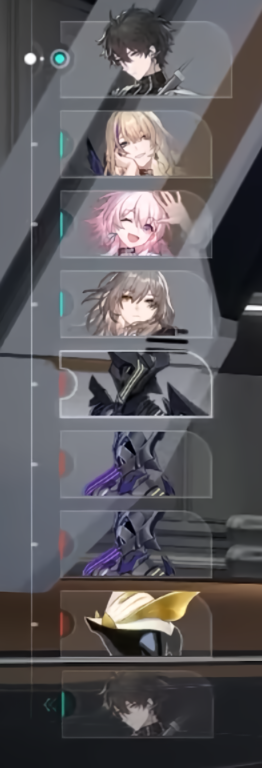
During a character’s turn, players can choose to perform a Basic Attack or Skill, which will end their turn and allow the next unit in the Action Order to act. On the other hand, Ultimates can be executed at any time, without ending a unit’s turn, making them extremely powerful abilities. Players can utilize Ultimates in between enemy actions to break their Toughness bar and disrupt incoming attacks. Not only does Weakness Break interrupt their action, but it also reduces their Action Value and further delays their turn. Keep in mind, Toughness bars will regenerate to full on the enemy’s next turn. Understanding turn sequence and managing skills are key to succeeding in Star Rail’s combat.
Games Modes
There are multiple stages available for players to gather resources to enhance their characters. The Calyx stages provide Character and Light Cone EXP, Credits, Trace upgrade materials, and Light Cone Ascension materials. Much like Domains from Genshin, Calyx stages have scheduled daily rotations for different materials. The Caverns of Corrosion provide various main Relic set pieces while the Stagnant Shadows allow players to farm various character ascension materials. Additionally, the Echo of War stages are weekly boss encounters that reward Relics, Trace upgrade materials, and Light Cones.
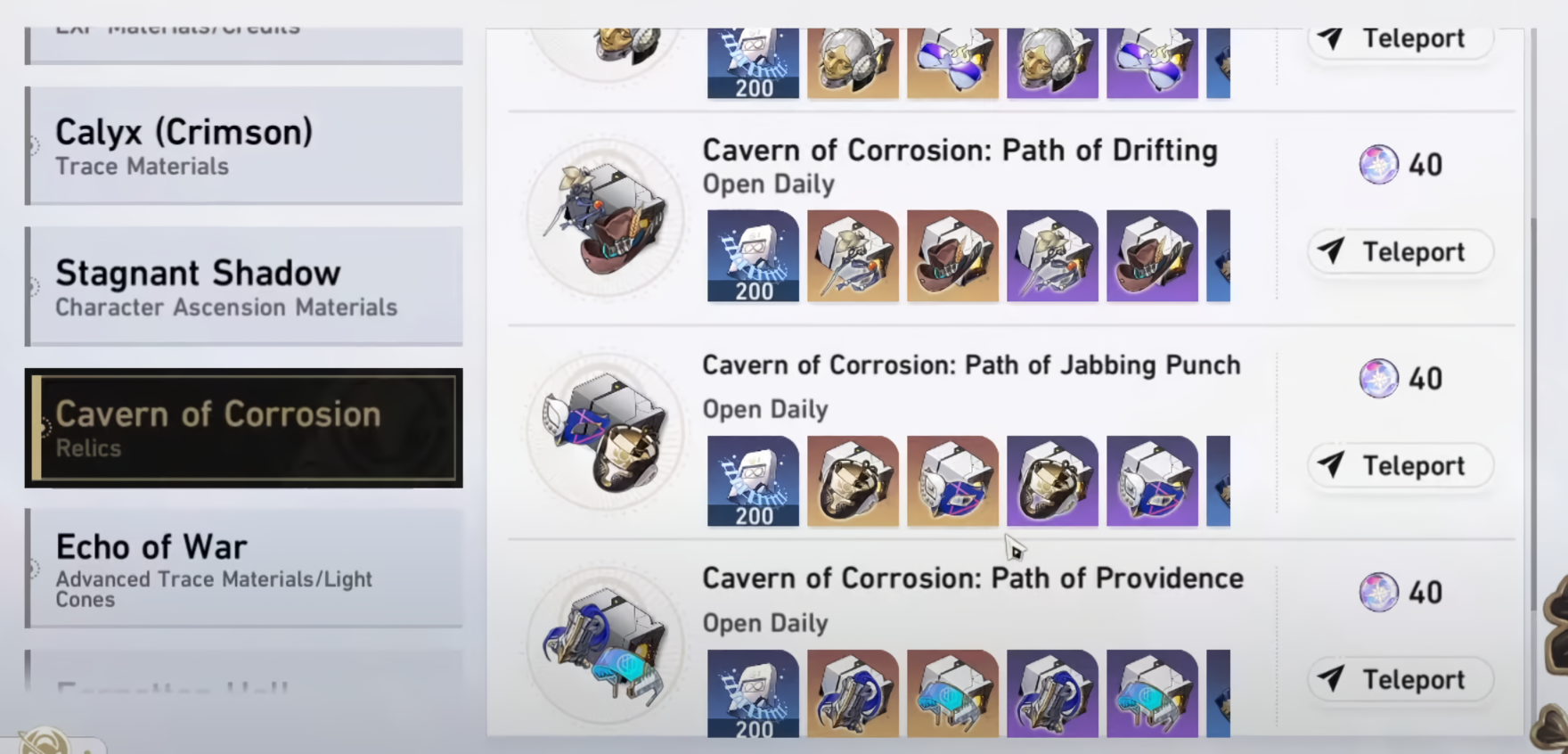
Forgotten Hall is an endgame challenge mode that operates similarly to the Spiral Abyss from Genshin. However, instead of racing against a timer, players must aim to finish the battles in as few turns as possible. Players will then be awarded zero to three stars based on their performance, which will then dictate how many rewards they receive. The Forgotten Hall consists of 15 stages with one-time rewards and 10 more challenging stages that reset regularly, resembling the Abyss Corridor and Abyssal Moon Spire.
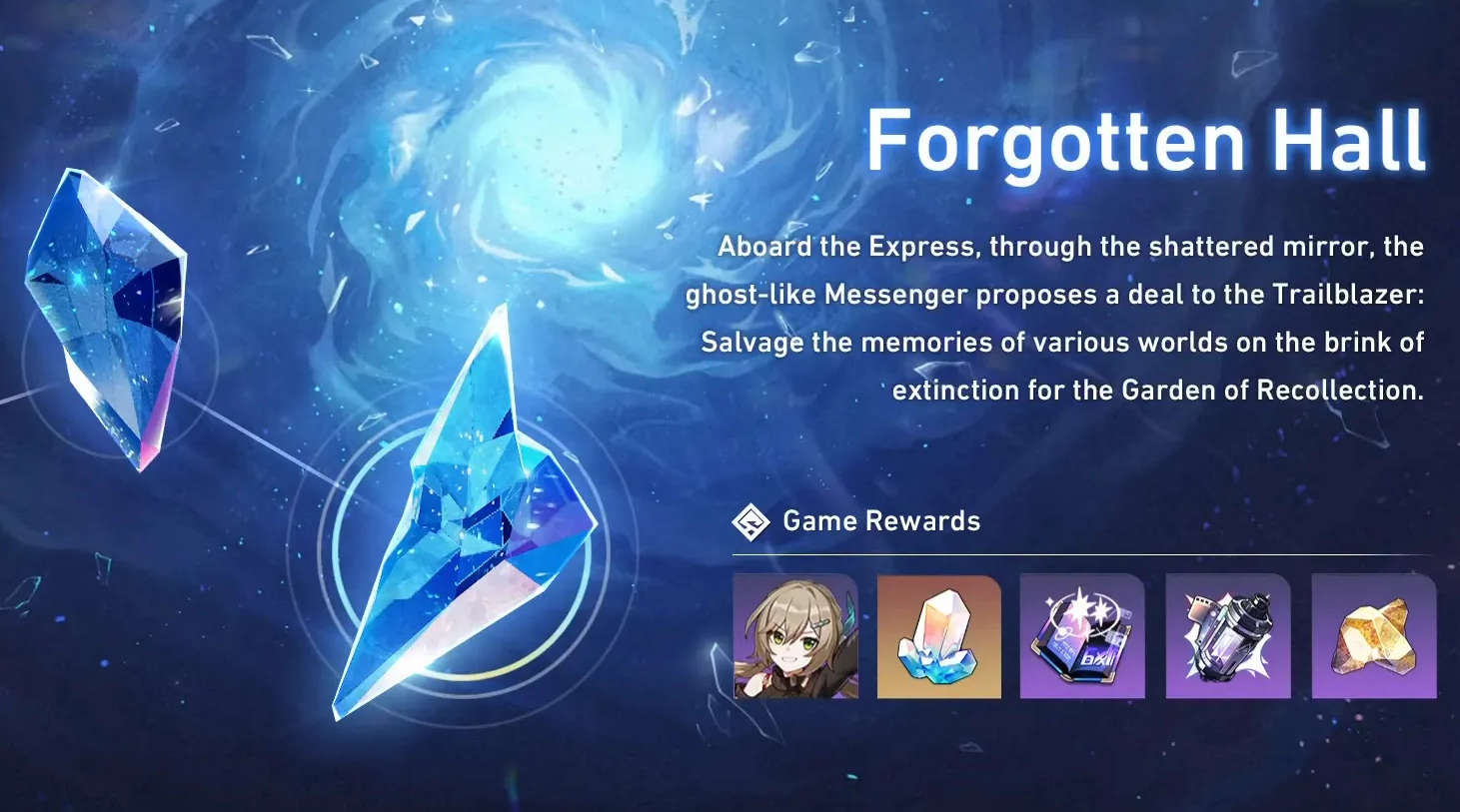
The Simulated Universe is a rogue-like game mode that resets weekly and offers rewards based on the number of stages cleared. There are six ‘Worlds’ in this game mode, each with varying difficulties and stages. Players will go through randomized stages and collect various buffs called Blessings and Curios to assist them. In the last stage, players must defeat a final boss room in order to clear the run. Most notably, this game mode is where players can farm Planar Ornaments for their additional 2-set effect.
Conclusion
Honkai: Star Rail is an exciting new entry to the Honkai universe with tons of potential. The game provides engaging turn-based combat and an immersive new world for players to explore. As is the case with any HoYoverse game, Star Rail features an array of fascinating characters and storylines that are sure to captivate players’ attention. If Genshin and HI3 are any indicators, players can expect plenty more content to be delivered after launch. Whether it’s fans of HoYoverse or newcomers to the franchise, Honkai: Star Rail is definitely worth checking out.





















